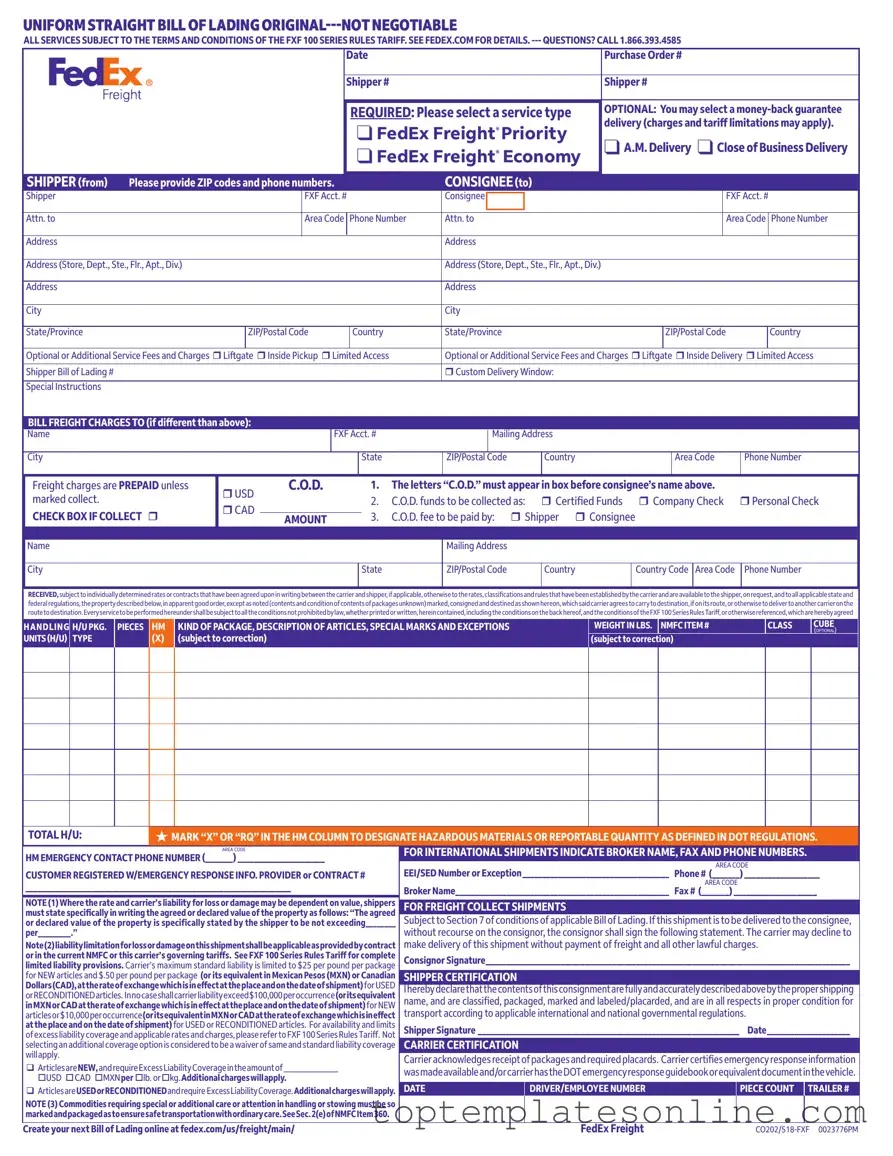Fillable Fedex Bill Of Lading Form
The FedEx Bill of Lading is a vital shipping document that serves as a receipt for goods and outlines the terms of transportation between the shipper and carrier. This form is not negotiable and is subject to the terms and conditions specified in the FXF 100 Series Rules Tariff. Understanding its components can help ensure a smooth shipping process and protect the interests of all parties involved.
Customize Fedex Bill Of Lading Here
